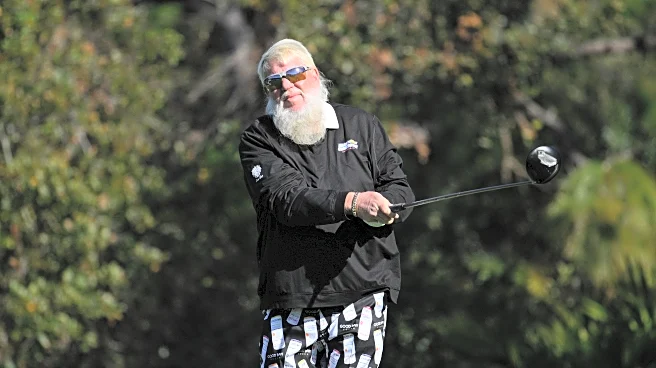What's Happening?
John Daly, a well-known figure in professional golf, set an unfortunate record at the PGA Tour Champions by scoring a 19 on the par-5 12th hole during the Sanford International. This score is the highest ever recorded for a single hole in the history of the PGA Tour Champions, surpassing the previous record by three strokes. Daly's performance included hitting his tee shot into the rough, followed by seven consecutive shots into a hazard. He eventually cleared the water and finished the hole with a score of 19. This incident adds to Daly's history of high scores, including an 18 on a par-5 at the Bay Hill Invitational in 1998.
Why It's Important?
Daly's record-breaking score highlights the challenges and unpredictability inherent in professional golf, even for seasoned players. Such occurrences can impact a player's reputation and career, as well as influence their mental and physical approach to the game. For the PGA Tour Champions, this event draws attention to the competitive nature of the tour and the potential for unexpected outcomes. It also serves as a reminder of the importance of resilience and adaptability in sports, as players must navigate both successes and setbacks.
What's Next?
Following this record-setting performance, Daly may face increased scrutiny and pressure to improve his game in future tournaments. The PGA Tour Champions will continue to monitor player performances and maintain the integrity of the competition. Daly's next steps could involve reassessing his strategies and techniques to prevent similar occurrences. Fans and analysts will likely watch his upcoming performances closely to see how he responds to this setback.
Beyond the Headlines
This incident may spark discussions about the mental aspects of golf and how players cope with high-pressure situations. It could also lead to conversations about the support systems available to athletes dealing with performance challenges. Additionally, Daly's experience might inspire other players to focus on mental resilience and preparation as key components of their training.













